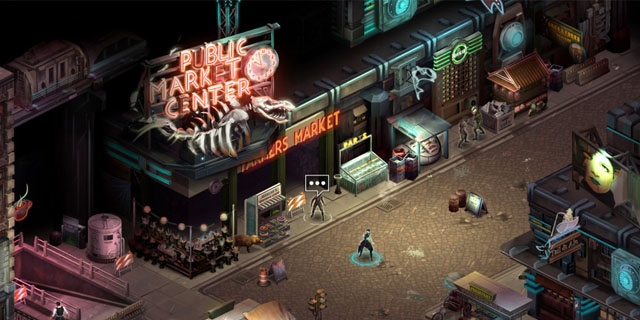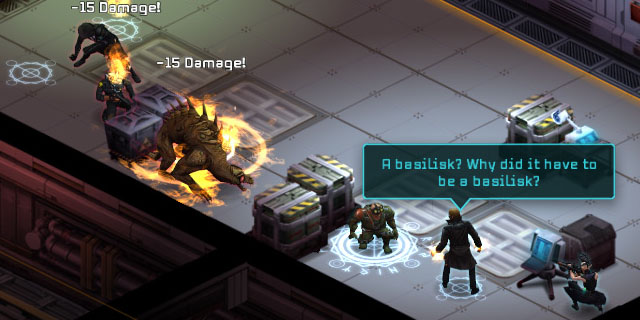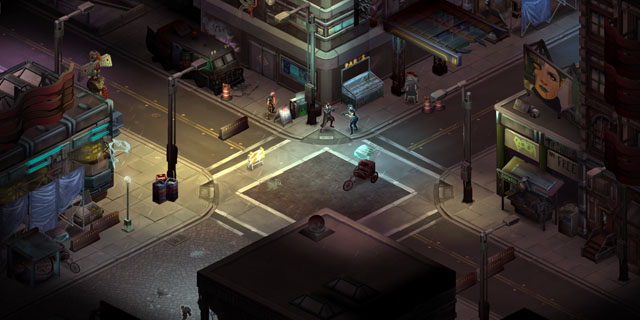
Shadowrun Returns is much more than an RPG. It’s a set of rulebooks, miniatures and set pieces that content creators can use to craft their own Shadowrun campaigns. When it is difficult to mesh schedules and locations, toolkits like Shadowrun Returns allow enthusiasts to play whenever the mood strikes and content creators to write campaigns for a larger audience.
Dead Man’s Switch is the campaign bundled with Shadowrun Returns, and like all good pen-and-paper RPG campaigns, there is a lot more exposition and character building than there is exploration and combat. The change is a welcome one; the folks at Harebrained Schemes flesh out 2050s Seattle wonderfully, and fill it with interesting characters to follow throughout the story. Dead Man’s Switch introduces new players to the world and mechanics of Shadowrun well.

The player is led through gender, race and class selection with explanations as to how each choice will affect play. Initial karma, Shadowrun’s version of level-up points, is doled out, and the system recommends a path for each type of character to take. You’re free to do whatever you want, of course, so if you desperately want to make an ork mage when dwarves and elves have higher willpower, then you’re free to do that.
There are a ton of options for karma distribution, and karma points come fast and furious so that, despite the short length of Dead Man’s Switch, the sense of progression is constant. This makes up for the brevity a bit, and the storytelling takes care of the rest. Dead Man’s Switch starts as a simple whodunit, and twists and turns into something much larger and more interesting. The supporting characters are well-written, and that is more than enough to compensate for the lack of voice acting. Spending development money and time on fleshing out the narrative instead of paying for actors to read fewer lines was a smart decision.

Combat plays out like a combination of classic Fallout and XCOM: Enemy Unknown. Everything happens on a grid, and each character can move or attack two times. Cover matters, hit percentage matters and, most importantly, you can talk your way out of a good number of combat encounters.
Role-playing is not solely about finding the next sword to increase your attack statistic, and Dead Man’s Switch is written with this in mind. If you do find yourself in combat, the specific character that you create and the runners that you contract to make up the rest of your party matter a great deal. Bring a decker along to access the matrix and shut down defenses from the inside. Bring a dwarven mage to subdue the enemy with magic attacks. Or take an elven street samurai if you prefer to slice first and ask questions never.
There are only a few side quests available, and the path is linear from start to finish. In a stark contrast to role-playing games like Fallout 3, the focus here is purely on the narrative, which serves to evoke a real tabletop session that was written by a close friend. Time was never taken to create a complicated quest line that went nowhere. The mystery needs solving, and by God, that’s why we’re here.
Others might complain about the lack of exploration and length, but those are plusses. Dead Man’s Switch tells its story without overstaying its welcome, and the tool kit is there for others to create new adventures in the Shadowrun universe. I can’t wait for more reasonable-length adventures. It’s nice to play something from start to finish without investing over 100 hours in it and forgetting the first act by the time I reach the third.
Pros: Great toolkit, included campaign is engaging, role-playing feels like pen-and-paper
Cons: Dead Man’s Switch needed an editor to catch the spelling and grammar errors



















